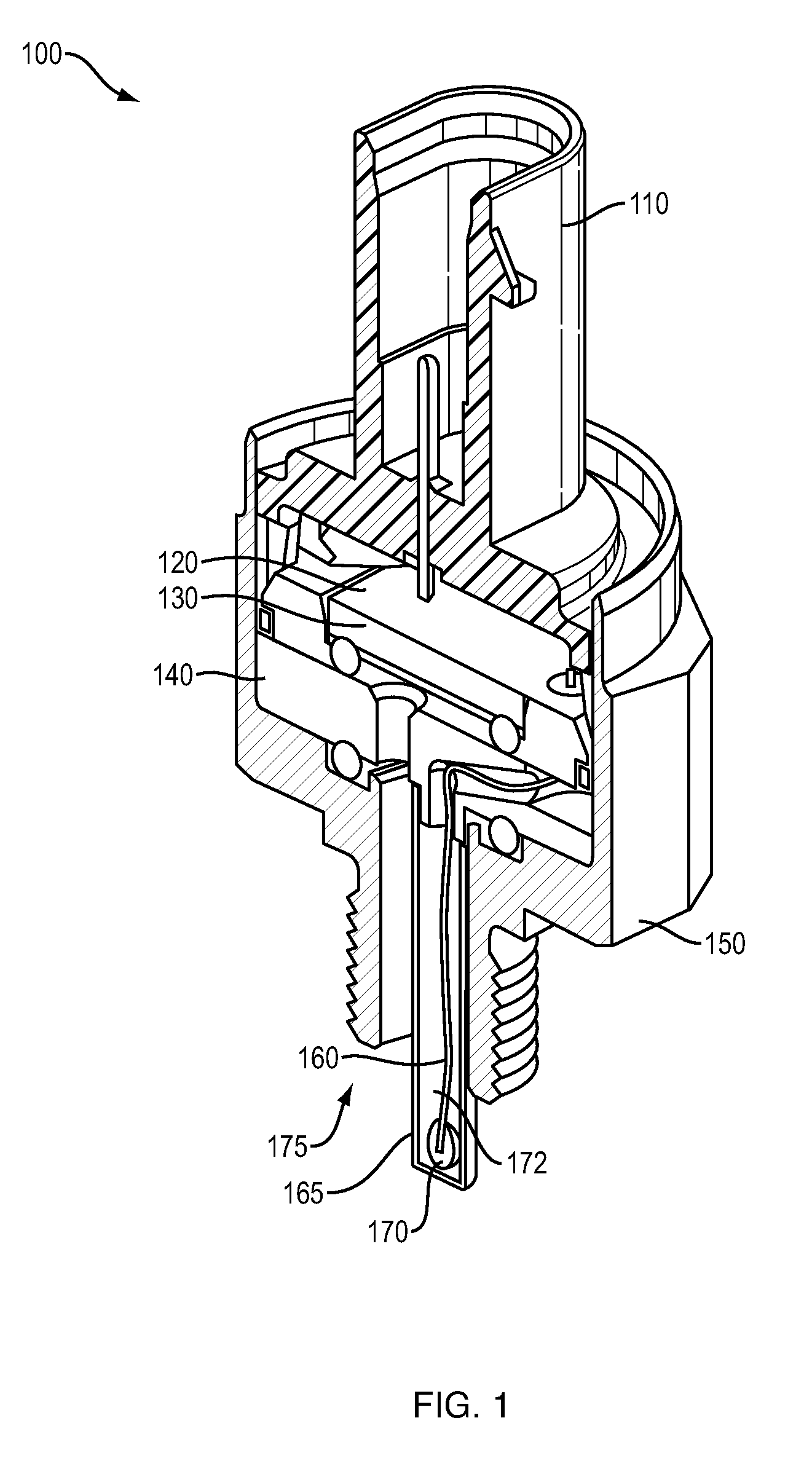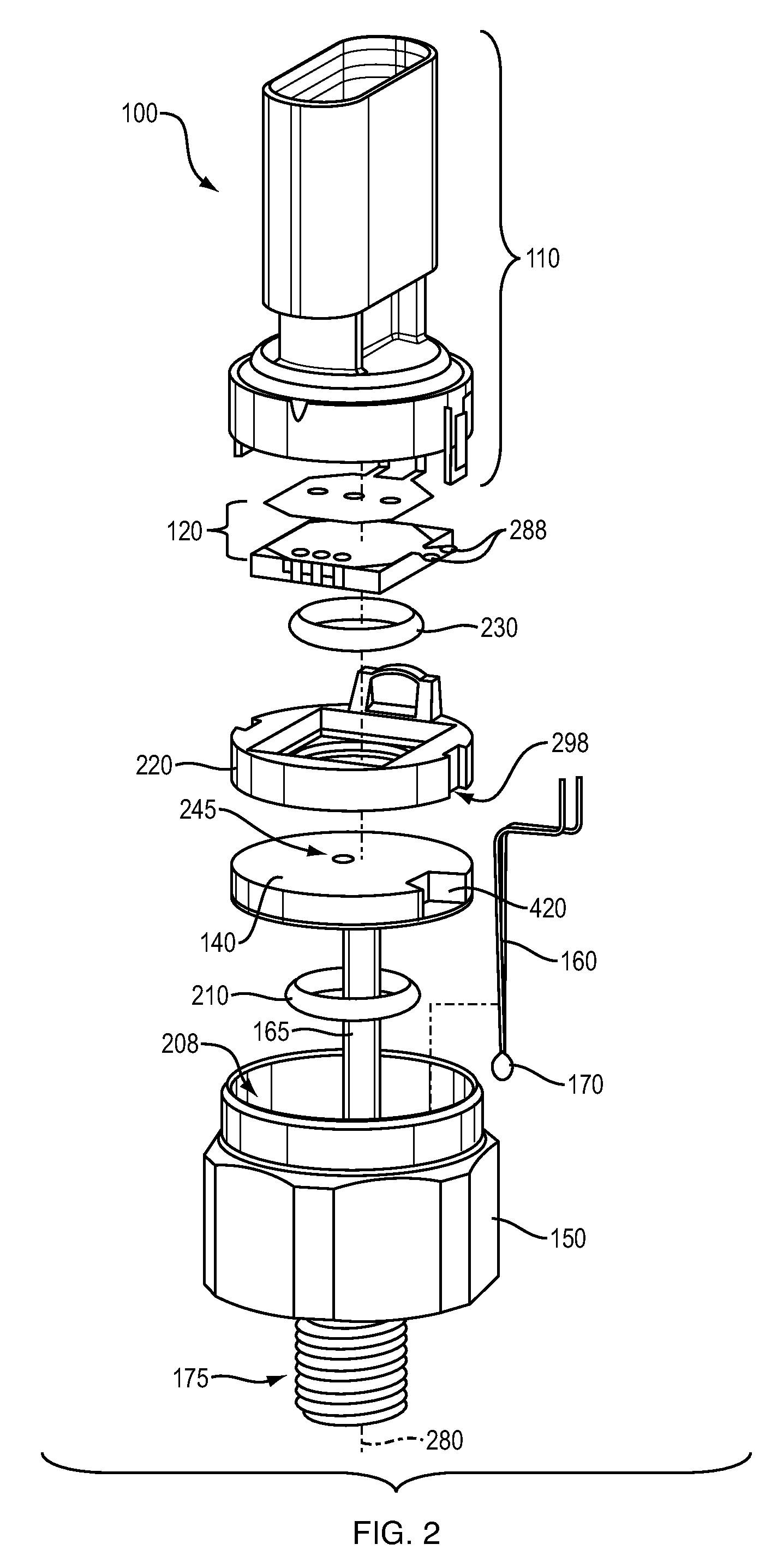Combination pressure/temperature in a compact sensor assembly
a sensor assembly and compact technology, applied in the field of compact sensor assembly of conjugated pressure/temperature, can solve the problems of large size, difficult manufacturing, and high manufacturing cost of conventional devices, and achieve the effect of reducing the size of the pressure/temperature sensor assembly and being highly robus
- Summary
- Abstract
- Description
- Claims
- Application Information
AI Technical Summary
Benefits of technology
Problems solved by technology
Method used
Image
Examples
Embodiment Construction
[0047]As discussed above, embodiments herein deviate with respect to conventional sensor assemblies. For example, in contrast to conventional systems, certain embodiments herein are directed to reducing a size of a pressure / temperature sensor assembly, while providing a highly robust sensor assembly that can survive a drop test without being damaged.
[0048]More specifically, FIG. 1 is an example cutaway perspective view of a sensor assembly including pressure sensor element and temperature sensor element according to embodiments herein.
[0049]As shown, sensor assembly 100 includes a rectangular-shaped pressure sensor element 130 (to sense a pressure of a fluid) and electronic circuitry 120 coupled to receive a signal from the pressure sensor element 130.
[0050]Although embodiments herein discuss use of a rectangular-shaped pressure sensor element, other suitable types of pressure sensor elements can be used in sensor assembly. The use of the rectangular-shaped pressure sensor element a...
PUM
| Property | Measurement | Unit |
|---|---|---|
| size | aaaaa | aaaaa |
| size | aaaaa | aaaaa |
| height | aaaaa | aaaaa |
Abstract
Description
Claims
Application Information
 Login to View More
Login to View More - R&D
- Intellectual Property
- Life Sciences
- Materials
- Tech Scout
- Unparalleled Data Quality
- Higher Quality Content
- 60% Fewer Hallucinations
Browse by: Latest US Patents, China's latest patents, Technical Efficacy Thesaurus, Application Domain, Technology Topic, Popular Technical Reports.
© 2025 PatSnap. All rights reserved.Legal|Privacy policy|Modern Slavery Act Transparency Statement|Sitemap|About US| Contact US: help@patsnap.com



